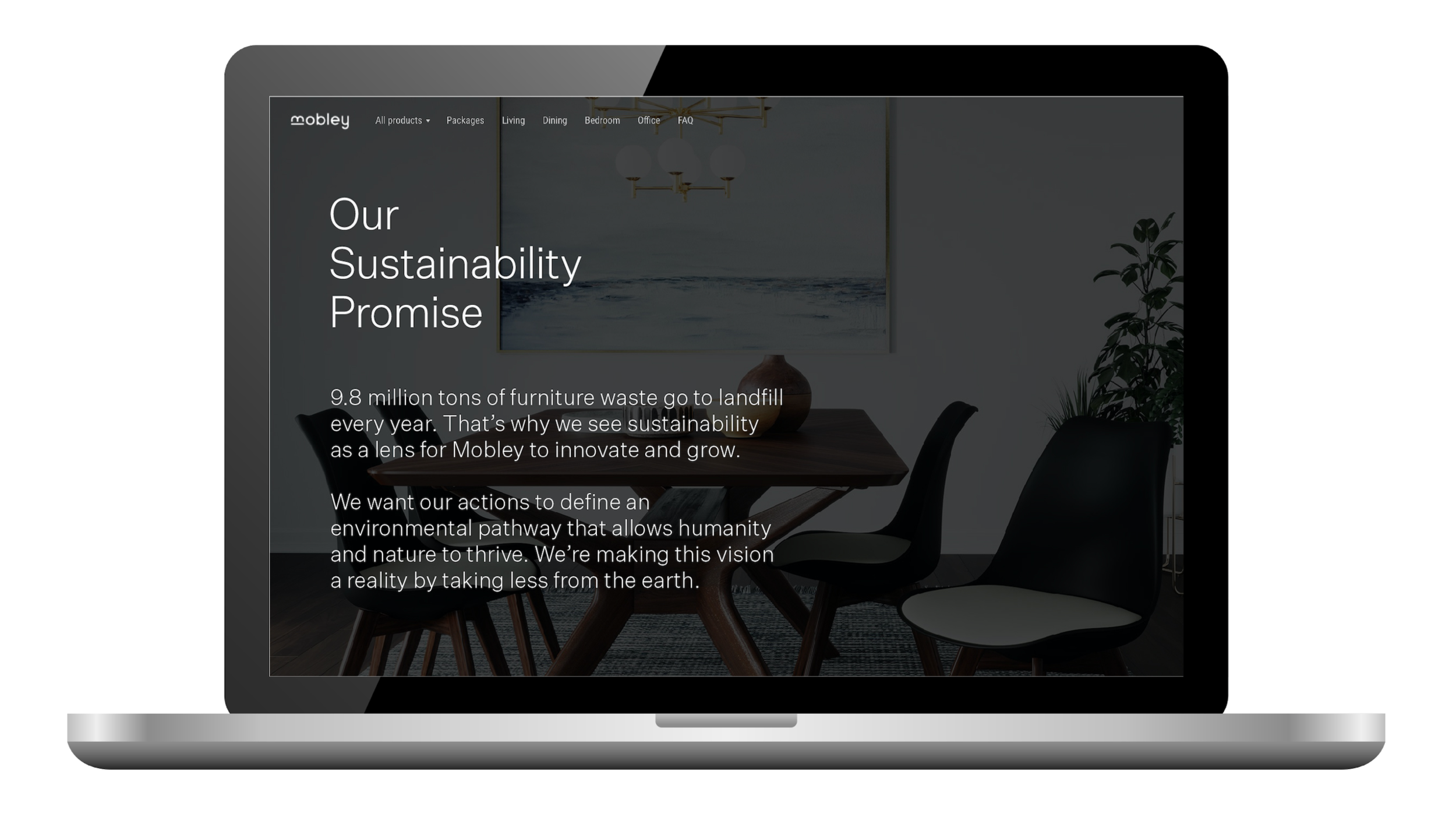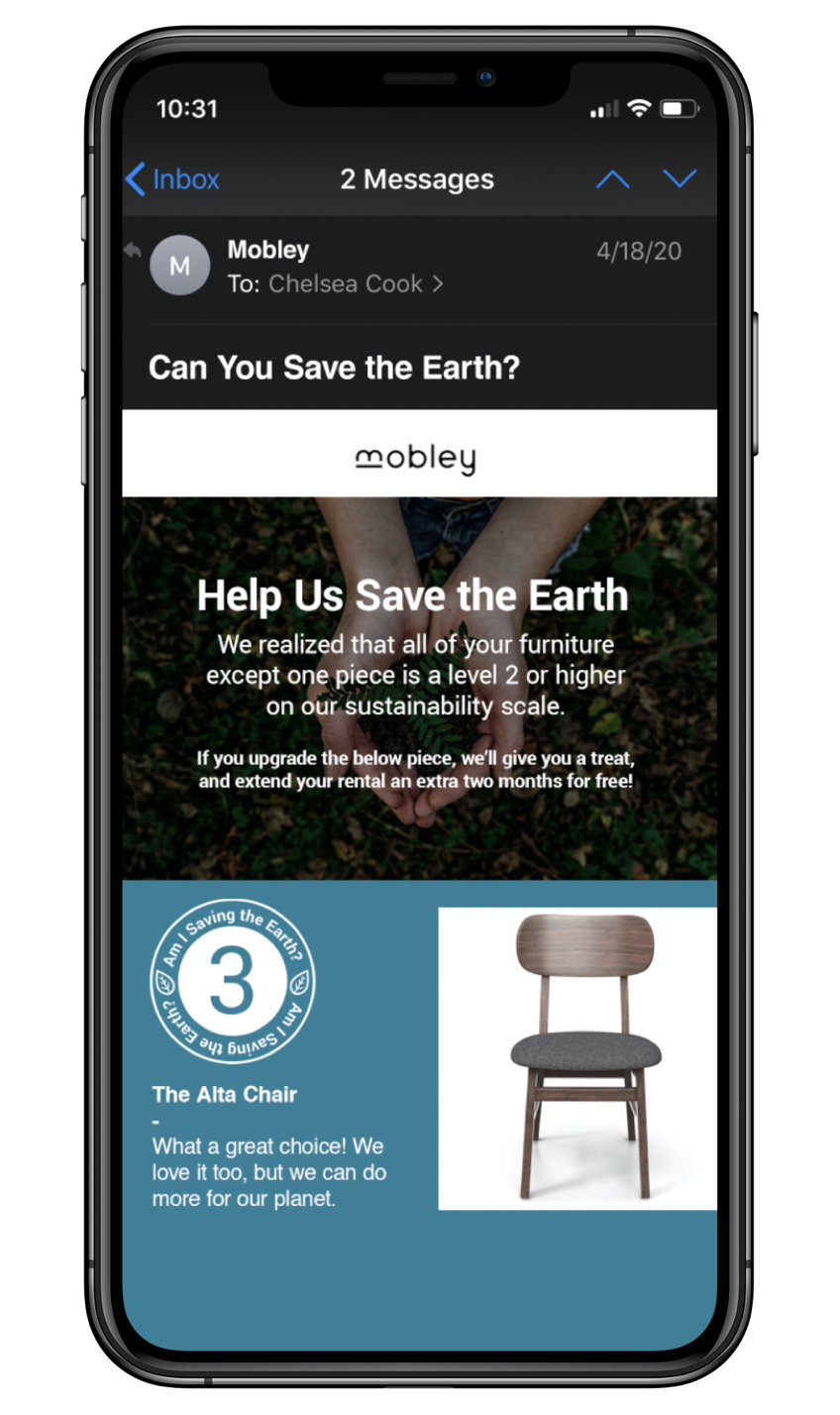Mobley
Building product strategies towards a sustainable furniture rental model
role: Product team, design & business strategist
Team: Diana Córdova, Chelsea Cook, Chris D’Andrea
Main methods I used:
+ User test & synthesis
+ UX/UI design & iteration
+ Sustainability scale & rubric development
+ Ethnographic & field research
+ Market & trend analysis
+ Stakeholder map
+ Product journey map
The Challenge
Mobley (now Conjure) is a NYC-based startup transforming furniture ownership through an online rental platform. The company wants to become a thought leader in the industry by tackling these 3 sustainability questions for a post COVID-19 world:
How might we address the environmental waste journey of furniture?
How might we measure sustainability in product offerings?
How might we position Mobley as the customer’s choice for an environmentally sustainable brand?
The Process: Product Team
Design Research & Sensemaking
The design research phase was carried through 4 steps:
define market opportunity & trends
develop the product journey
interview Mobley’s customers
investigate Mobley’s warehouse processes
The Product Journey in motion.
To read more of our process, research insights and prototype iterations, please refer to the design report at the bottom of the page.
The Deliverables
After 10 user tests, 3 pivots, 8 iterations and 3 all-studio meetings with the client, our team delivered to our client:
Product Sustainability Scale
Sustainability Webpage
Research of Sustainability Certifications (Excel Sheet for Client)
Product Sustainability Scale
The product sustainability scale (image 1) consists of 3 tiers with 1 being the highest and 3 being the lowest. All of Mobley products will have 1 of these 3 ratings based on the scale rubric that we developed (image 2). The rubric helps rate products holistically based on industry standards for 3 categories: Raw Materials/Resources, Climate Impact, and Sustainable Design.
This strategy brings sustainability to the forefront of Mobley’s products, as well as increases transparency for customers who want to make more eco-conscious choices.
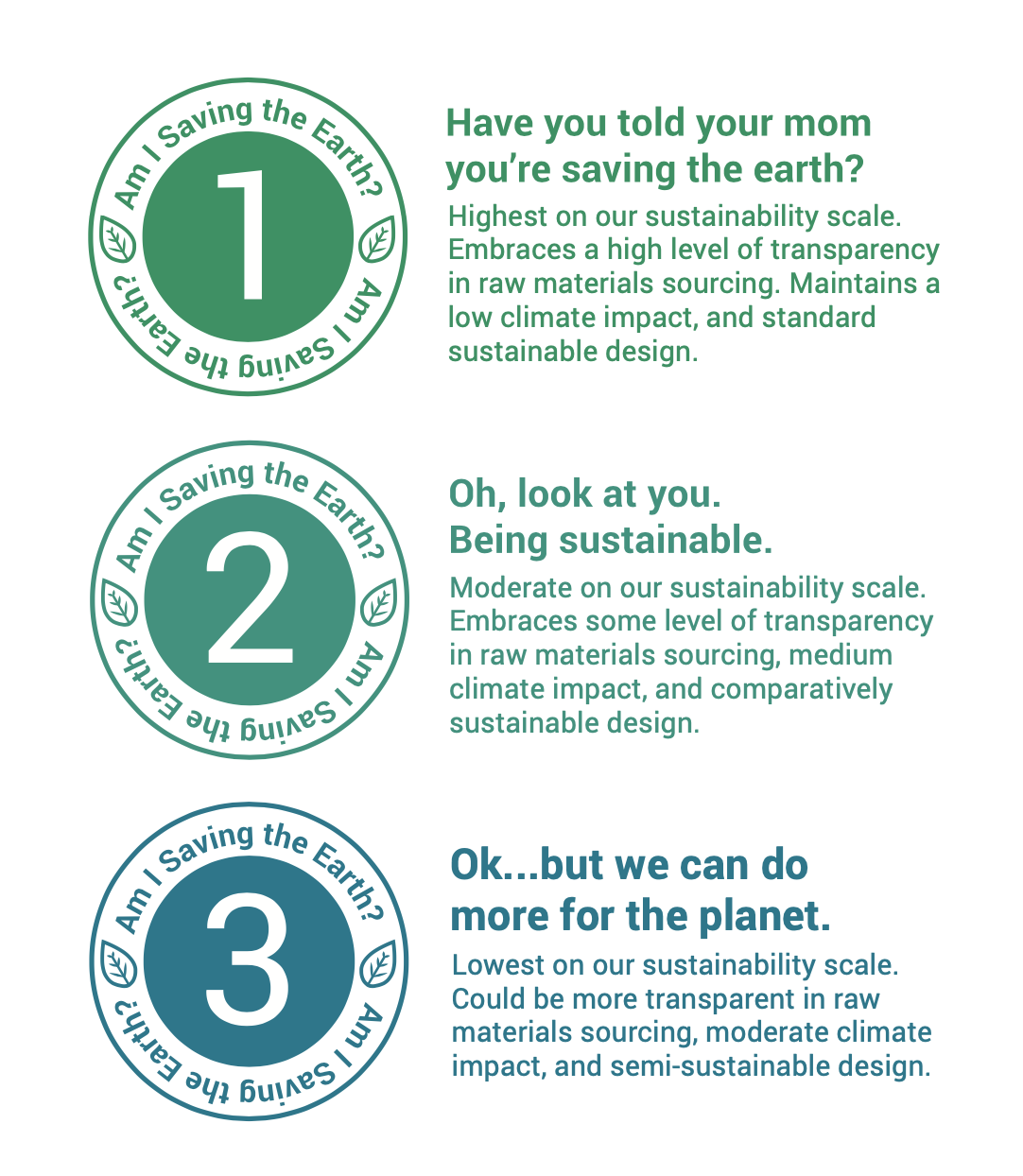
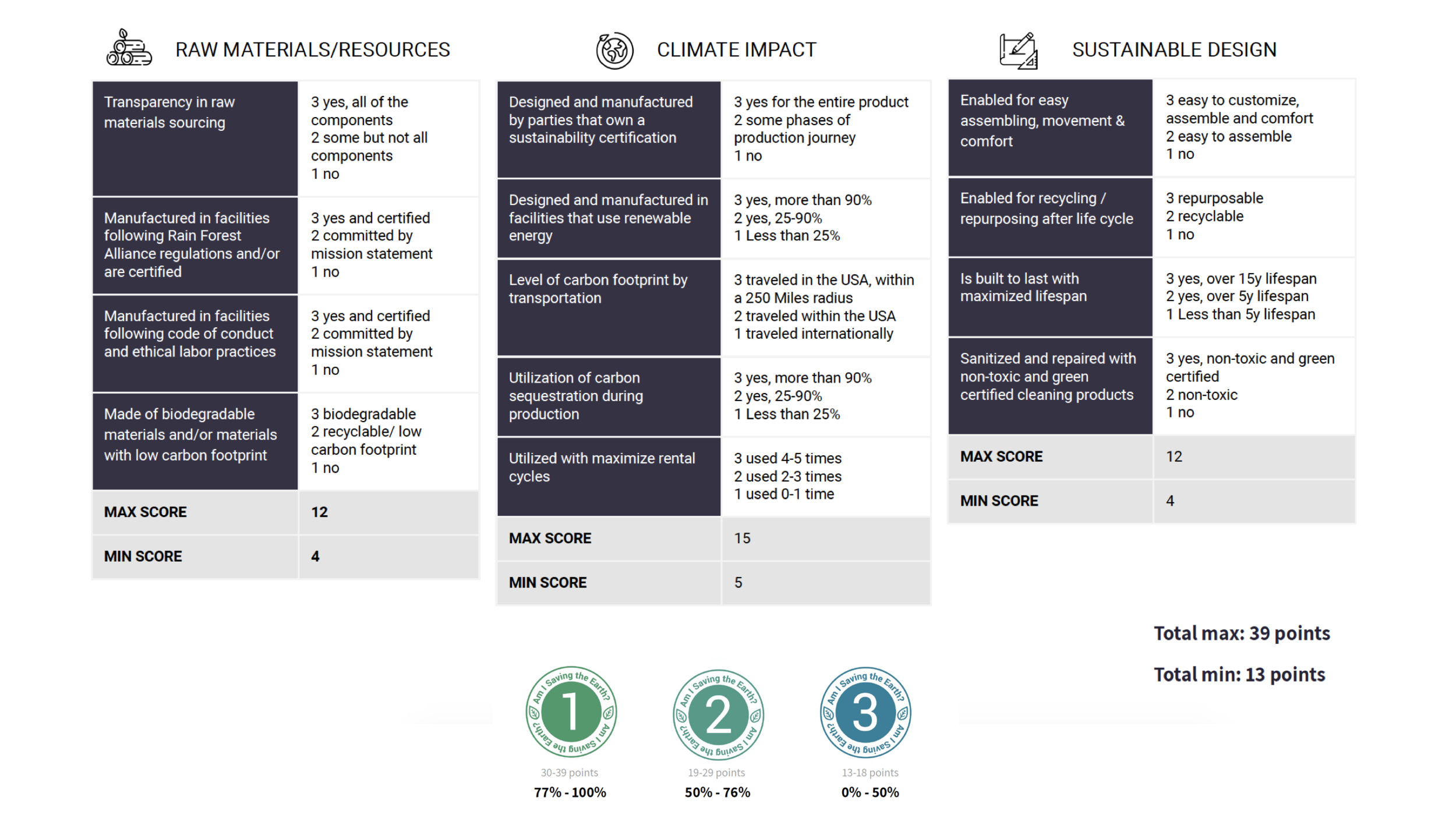
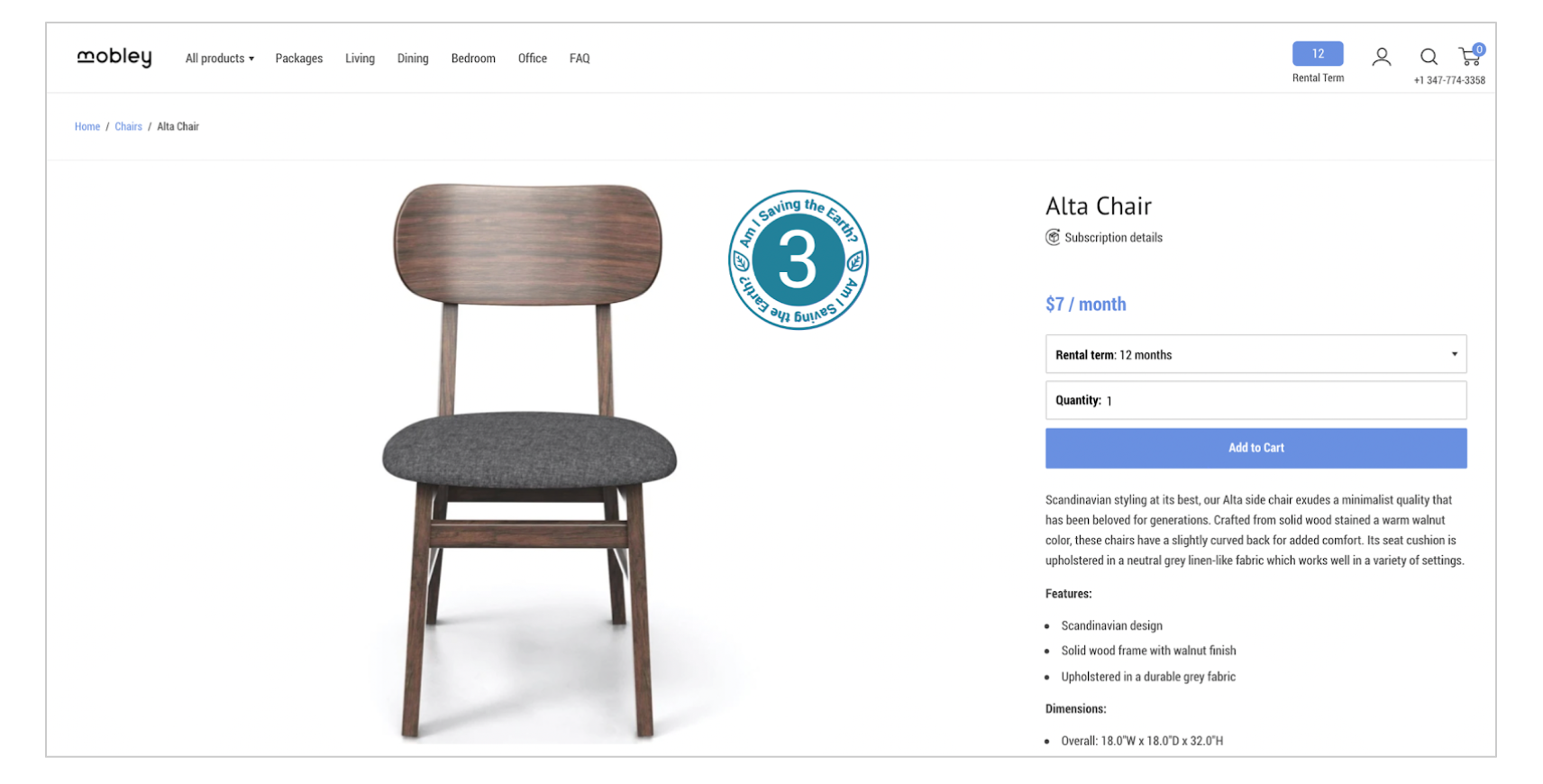
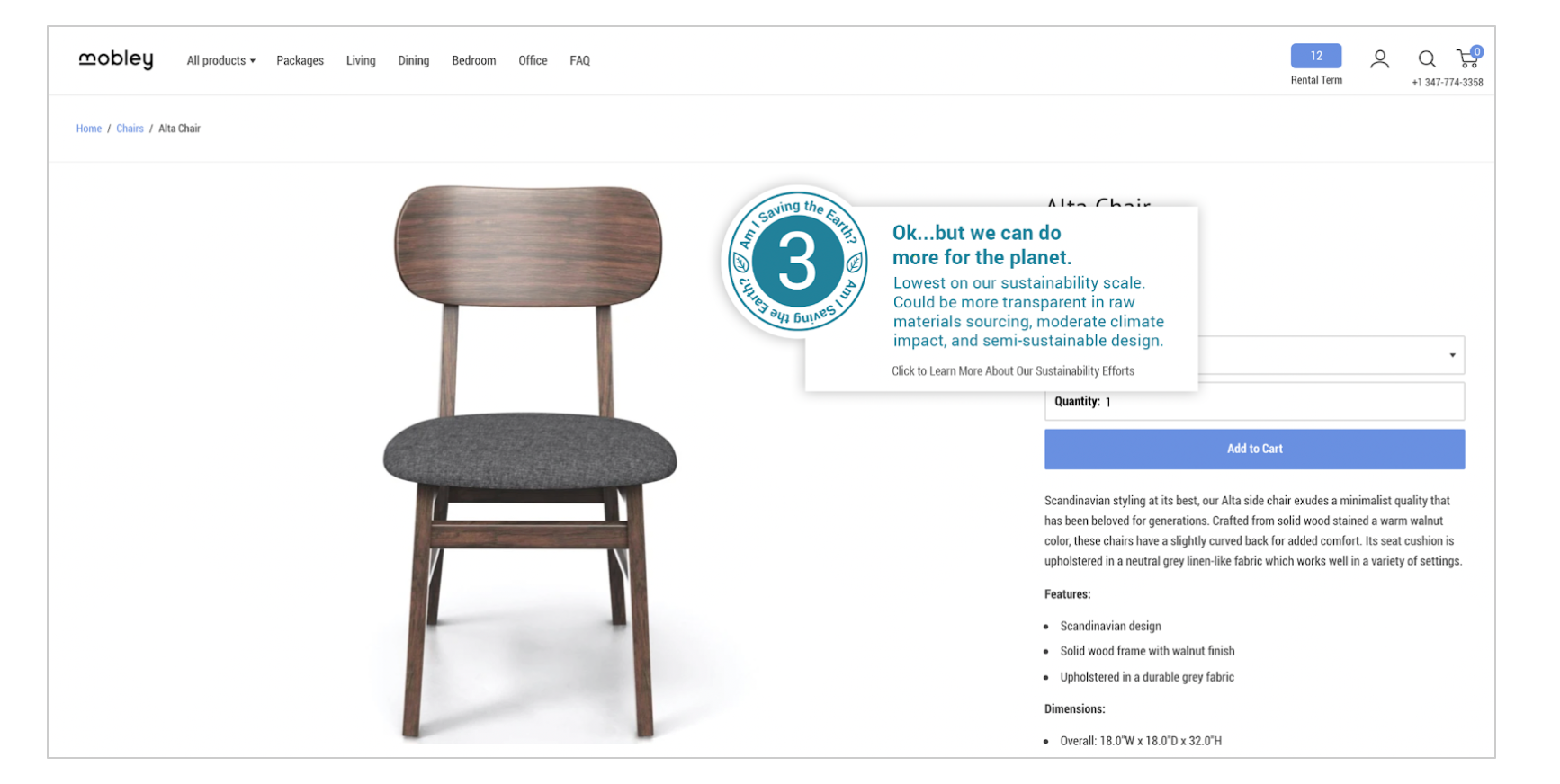
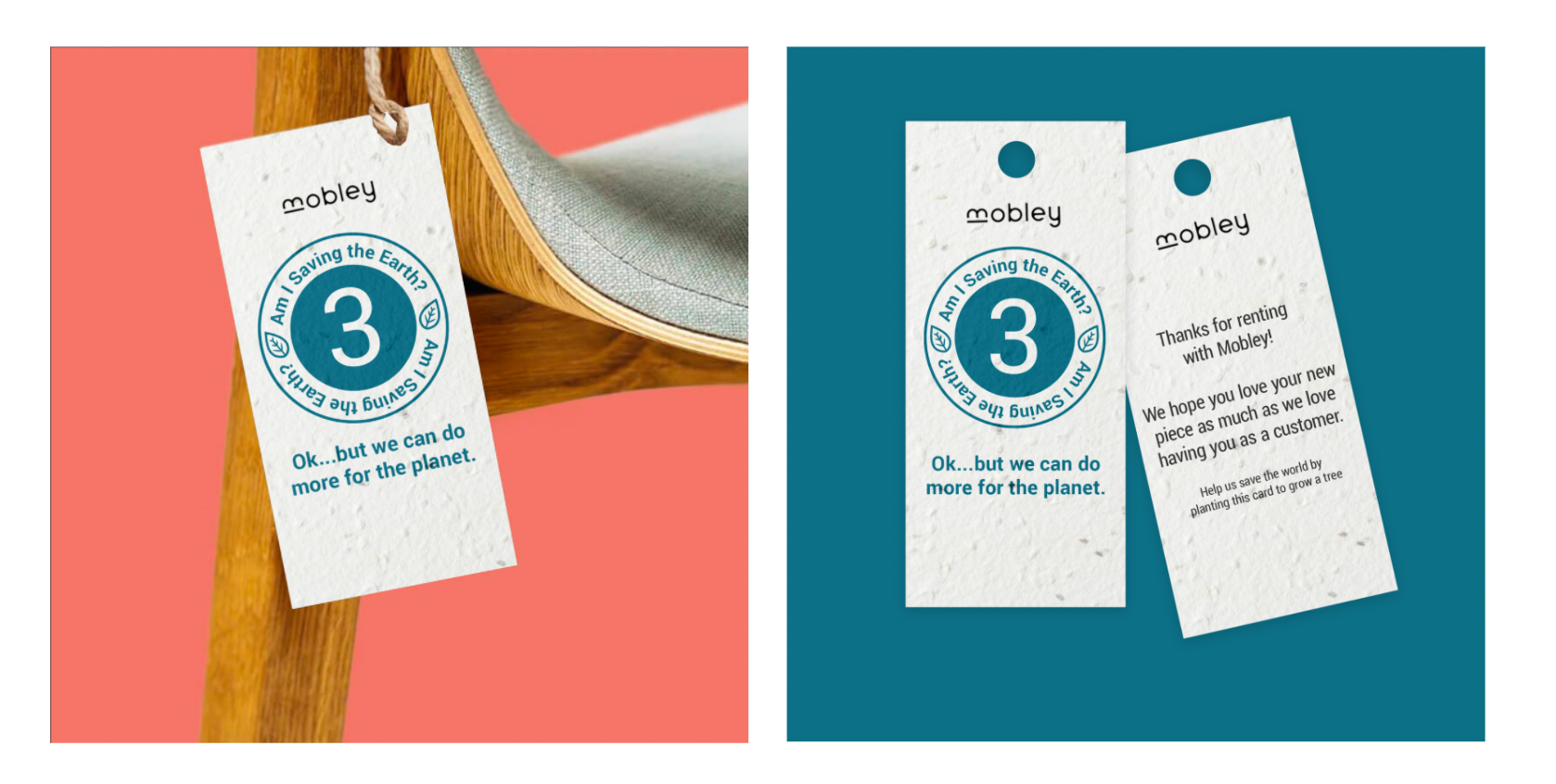
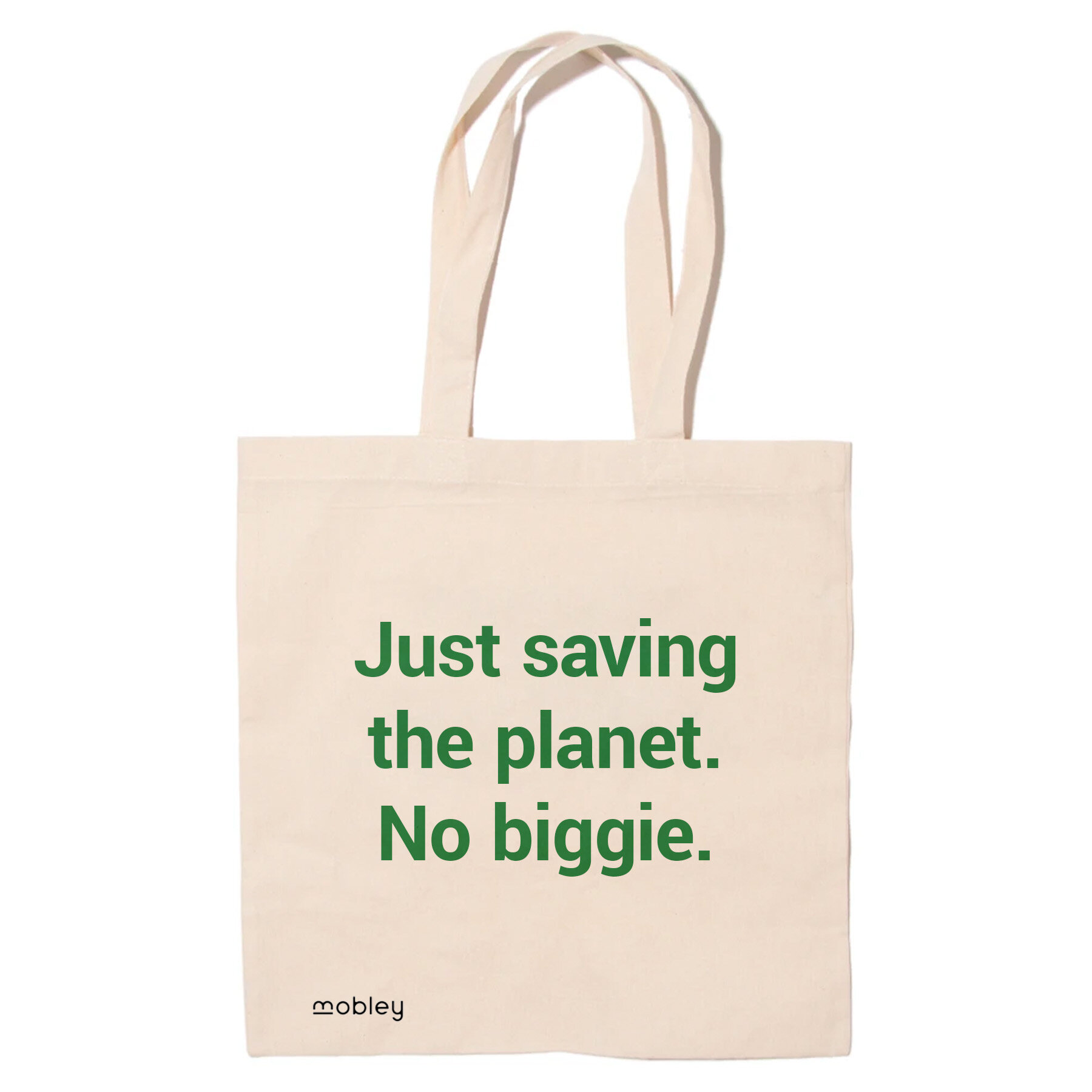
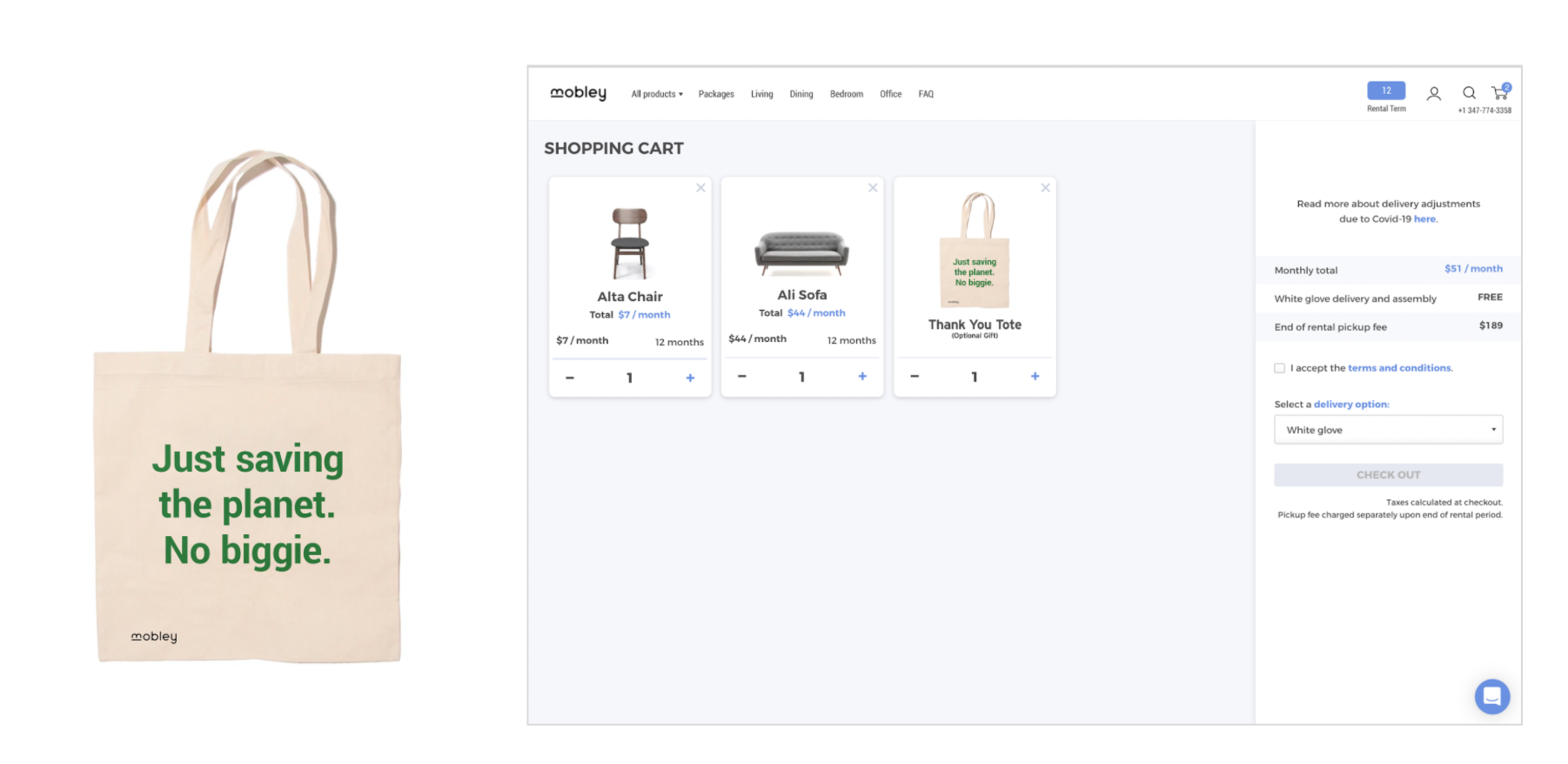
Sustainability Webpage
Our user tests proved that customers’ perception of the brand increased significantly when they read Mobley’s sustainability page. The page includes the brand’s mission statement and climate impact goals, virtual cleaning journey, furniture waste facts, and information about the sustainability scale and rubric (image 1 & 2).
To engage customers as the multipliers in Mobley's sustainability journey, our team came up with an incentive to upgrade products. With customers’ purchasing power, the brand can gradually swap out unsustainable products with those that are made to last and more ecocentric (image 3).
